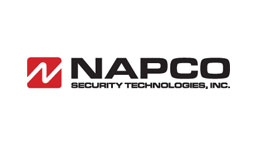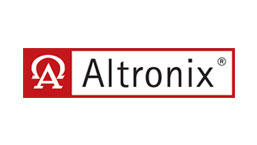Driving Excellence: TMA Industry Standards and Their Impact on Security Organizations
By: Julie Stevens, BOLD Group
In the dynamic landscape of security operations, industry standards play a vital role in establishing best practices and ensuring the highest level of service delivery. The Monitoring Association (TMA), an ANSI Accredited Standards Developing Organization (SDO), sets the benchmark for excellence through the development and maintenance of American National Standards (ANS). In this blog, we will explore the importance of TMA industry standards, with a focus on specific standards such as TMA-ATN-01, APCO/TMA ANS 2.101.3-2021, ANSI/TMA CS-V-01-2022, and ANSI/TMA AVS-01-2023.
These standards address active threat detection, alarm monitoring company integration with emergency communications centers, alarm confirmation and verification procedures, and alarm validation scoring. While TMA initiates standards development, it also actively monitors and works with other Standards Development Organizations. TMA Standards Committee members work closely on standards and guides developed by UL, SIA, NFPA, APCO, and NENA that directly or peripherally impact monitoring centers. Embracing these standards not only elevates security organizations but also enhances public safety.
TMA-ATN-01: Monitoring Center Notification of Active Threat Detection:
In an evolving security landscape, monitoring centers face the challenge of handling non-traditional alerts, such as shot detection and weapons detection. TMA-ATN-01 establishes guidelines for immediate notification of these active threat events to public safety agencies. This standard outlines protocols for monitoring centers to receive and process alerts from both human sources and technology-initiated systems. By adhering to TMA-ATN-01, security organizations can ensure rapid and effective response to active shooter situations, contributing to the safety of facilities with high human presence.
APCO/TMA ANS 2.101.3-2021: Alarm Monitoring Company to Emergency Communications Center (ECC) Computer-Aided Dispatch (CAD) Automated Secure Alarm Protocol (ASAP):
The seamless integration of alarm monitoring companies with emergency communications centers is crucial for efficient emergency response. APCO/TMA ANS 2.101.3-2021, also known as ASAP, establishes standardized protocols for transmitting alarm data from monitoring centers to ECCs through CAD systems. By automating the process, ASAP reduces call processing times, minimizes errors, and provides ECCs with accurate and timely information. Security organizations adopting ASAP enhance emergency response coordination, resulting in improved public safety outcomes.
ANSI/TMA CS-V-01-2022: Alarm Confirmation, Verification, and Notification Procedures Standard:
False alarms can strain law enforcement resources and compromise the effectiveness of alarm systems. ANSI/TMA CS-V-01-2022 sets guidelines for alarm confirmation, verification, and notification procedures to minimize false alarms. This standard emphasizes the importance of employing multiple verification methods, such as audio and video confirmation, before contacting law enforcement. By implementing these procedures, security organizations not only reduce false alarms but also enhance the credibility of their systems, ensuring that law enforcement resources are allocated efficiently.
ANSI/TMA AVS-01-2023: Alarm Validation Scoring (AVS) Standard:
Efficient resource allocation and prioritization are critical for effective law enforcement response. ANSI/TMA AVS-01-2023 introduces a standardized method for creating an alarm scoring or classification metric for unauthorized human activity detected by alarm systems. This scoring system assists law enforcement agencies in determining the level of response required based on the severity and credibility of the alarm. By using the AVS standard, security organizations contribute to better resource allocation, enabling law enforcement to prioritize calls for service and respond promptly to genuine threats.
The adoption and implementation of TMA industry standards, including TMA-ATN-01, APCO/TMA ANS 2.101.3-2021, ANSI/TMA CS-V-01-2022, and ANSI/TMA AVS-01-2023, have a significant impact on security organizations and public safety. These standards provide clear guidelines for active threat detection, integration with emergency communications centers, alarm confirmation and verification procedures, and alarm validation scoring. By embedding these standards into their operations, security organizations elevate their efficiency, credibility, and effectiveness. Moreover, adherence to industry standards enhances public safety outcomes, promotes collaboration, and contributes to the continuous improvement of the security industry as a whole. Embracing TMA industry standards is not only a commitment to excellence but also a testament to the dedication of security organizations in safeguarding lives and assets.
When your company joins TMA, you become part of the association that promotes and defends the interests of the monitoring industry, through its work in government relations, regulatory advocacy, and standards development. We are always looking for subject matter experts to join their peers in helping to define the future by participating on the various committees we have including the different standards committees. If you are interested in learning more about TMA standards work or volunteering to serve on a working group or committee, please visit tma.us for more information.









Leave a Reply
Want to join the discussion?Feel free to contribute!